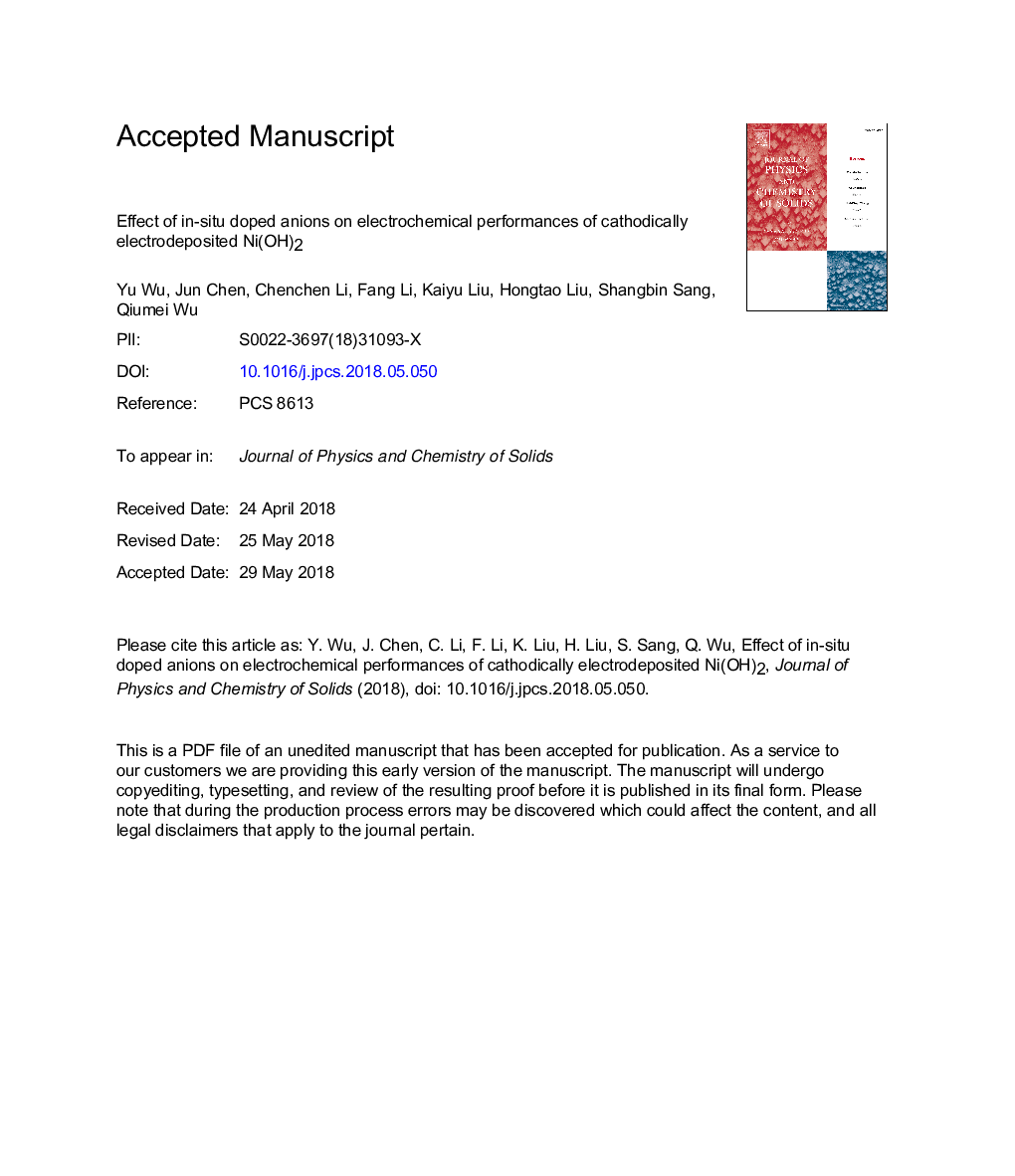| Article ID | Journal | Published Year | Pages | File Type |
|---|---|---|---|---|
| 11031129 | Journal of Physics and Chemistry of Solids | 2019 | 23 Pages |
Abstract
In this work, the anion in situ doped nickel hydroxide nanoparticles were electrochemically synthesized by different nickel salt solution. NO3â, Clâ and SO42â can be in situ intercalated into the cathodically deposited Ni(OH)2 sample (α-phase), while CH3COOâ cannot be in situ intercalated into the cathodically deposited Ni(OH)2 sample (β-phase). The doping effect on the electrochemical performances of the synthesized sample is related with both of the size and the structure characteristic of the doped anions. On one side, the enlargement of lattice spacing is beneficial to H+/OHâ transfer, and on the other side, the steric hindrance effect is restrictive to H+/OHâ transfer. However, the NO3â intercalated Ni(OH)2 sample has the largest lattice spacing and the highest electrochemical performances due to its special planar structure characteristic and the effect on the dissociation energy of O-H bond in the charge-discharge process of Ni(OH)2.
Related Topics
Physical Sciences and Engineering
Materials Science
Electronic, Optical and Magnetic Materials
Authors
Yu Wu, Jun Chen, Chenchen Li, Fang Li, Kaiyu Liu, Hongtao Liu, Shangbin Sang, Qiumei Wu,
